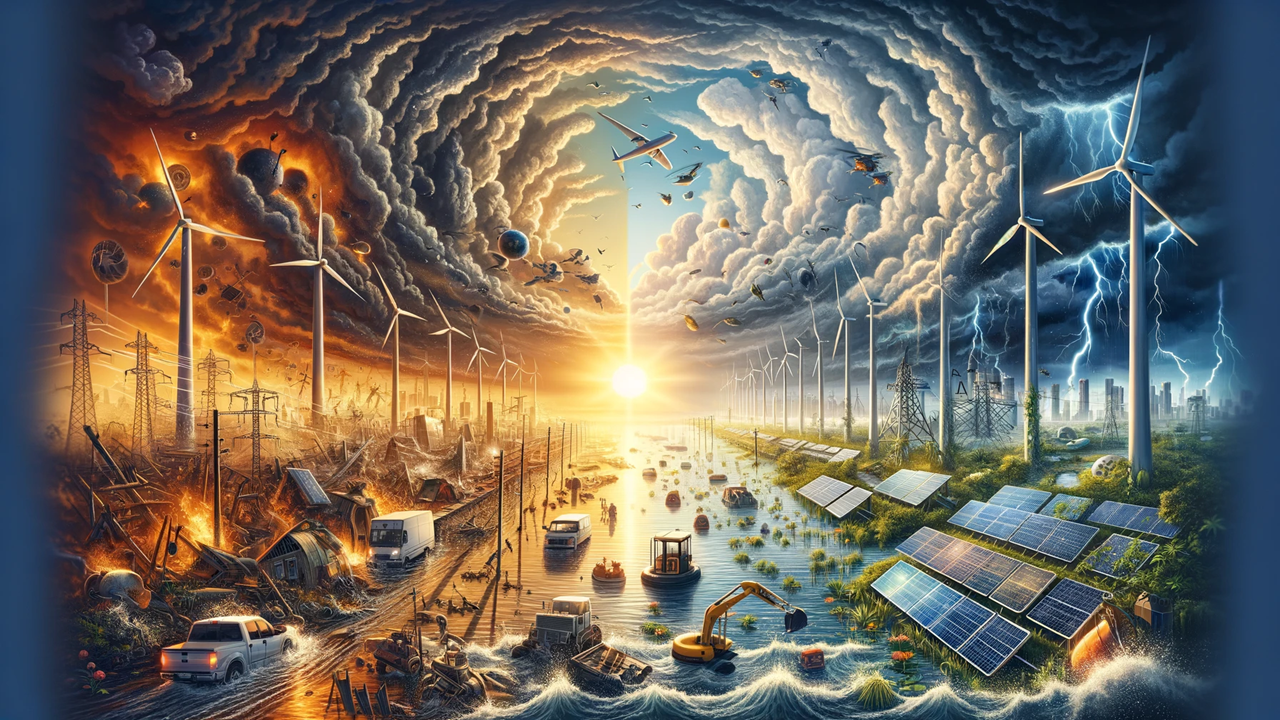The Impact of Climate Change on Renewable Energy Production and Reliability
This article explores the complex relationship between climate change and renewable energy production, examining how shifting weather patterns affect the reliability and efficiency of renewable energy sources. It delves into the challenges and opportunities presented by climate change, underscoring the critical need for adaptive strategies in the renewable energy sector.

In the unfolding narrative of our planet's climate, a paradox is emerging: the very forces driving the shift towards renewable energy are also posing new challenges to its production and reliability. As climate change alters weather patterns across the globe, the renewable energy sector—heralded as a beacon of hope in the fight against global warming—finds itself at the mercy of the very problem it seeks to mitigate. This article delves into the intricate dance between climate change and renewable energy, highlighting the obstacles, adaptations, and innovations shaping the future of sustainable energy.
The Influence of Climate Change on Renewable Resources
Renewable energy sources like solar, wind, and hydroelectric power depend heavily on specific climatic conditions to operate efficiently. Solar panels require clear, sunny skies; wind turbines need consistent, strong winds; and hydroelectric plants rely on steady rainfall to fill reservoirs. However, climate change is disrupting these conditions, leading to variability in energy production and challenging the reliability of these green power sources.
Solar Power: A Cloudy Forecast
The production of solar energy can be significantly affected by changing cloud patterns and rainfall. Regions traditionally known for their clear skies may experience increased cloud cover or smoke from wildfires, both exacerbated by climate change, reducing the solar irradiance reaching solar panels. Additionally, higher temperatures can decrease the efficiency of photovoltaic cells, complicating predictions about solar energy's potential output.
Wind Energy: Shifting Winds
Wind energy is not immune to the impacts of climate change. Alterations in global temperature patterns can shift wind paths and change wind speeds in areas once considered ideal for wind farms. These changes may lead to a mismatch between existing infrastructure and optimal conditions, requiring new strategies for location selection and turbine technology.
Hydroelectric Power: Unpredictable Waters
Hydroelectric power, one of the oldest sources of renewable energy, faces uncertainty due to fluctuating rainfall patterns. Increased evaporation rates and changing precipitation patterns can reduce water availability in reservoirs, impacting power generation. Conversely, extreme weather events, such as heavy rains and flooding, can exceed the capacity of dams, posing risks to both safety and efficiency.
Adaptation Strategies: Navigating the New Normal
The renewable energy sector is not standing idly by as climate change redraws the map of energy production. Instead, it's engaging in innovative adaptation strategies to ensure resilience and reliability. These include diversifying energy sources to mitigate the risk of reliance on a single type of renewable energy, improving forecasting models to better predict environmental changes, and investing in technology upgrades to enhance efficiency under varying conditions.
Technological Innovations: The Path Forward
Technology plays a pivotal role in adapting renewable energy systems to the challenges posed by climate change. Advances in battery storage technologies enable the storage of excess energy during peak production times, which can be used when conditions are not favorable for energy generation. Smart grid technologies offer more efficient distribution systems, reducing losses and improving the reliability of renewable energy. Moreover, ongoing research into more resilient and efficient solar panels, wind turbines, and hydroelectric technologies promises to expand the potential of renewable resources in a changing climate.
Policy and Planning: Shaping a Sustainable Future
The transition to a renewable energy-dominated grid requires not only technological innovation but also forward-thinking policies and planning. Governments and organizations worldwide are recognizing the need to incorporate climate risk assessments into energy planning. By incentivizing research and development in renewable technologies and infrastructure resilience, and by implementing policies that encourage the diversification of energy sources, policymakers can play a crucial role in mitigating the impacts of climate change on renewable energy production.
Conclusion: A Resilient Response to a Changing Climate
The relationship between climate change and renewable energy is complex and marked by challenges and opportunities. As the planet warms, the renewable energy sector must navigate the shifting conditions that both necessitate and complicate its mission. The path forward involves a resilient response that embraces adaptation, technological innovation, and proactive policy-making. By doing so, renewable energy can continue to play its critical role in mitigating climate change, not just as a victim of changing weather patterns, but as a key protagonist in the story of our sustainable future. In this journey, the resilience of renewable energy against the backdrop of climate change becomes not just a challenge to overcome, but a testament to human ingenuity and our collective commitment to a healthier planet.










